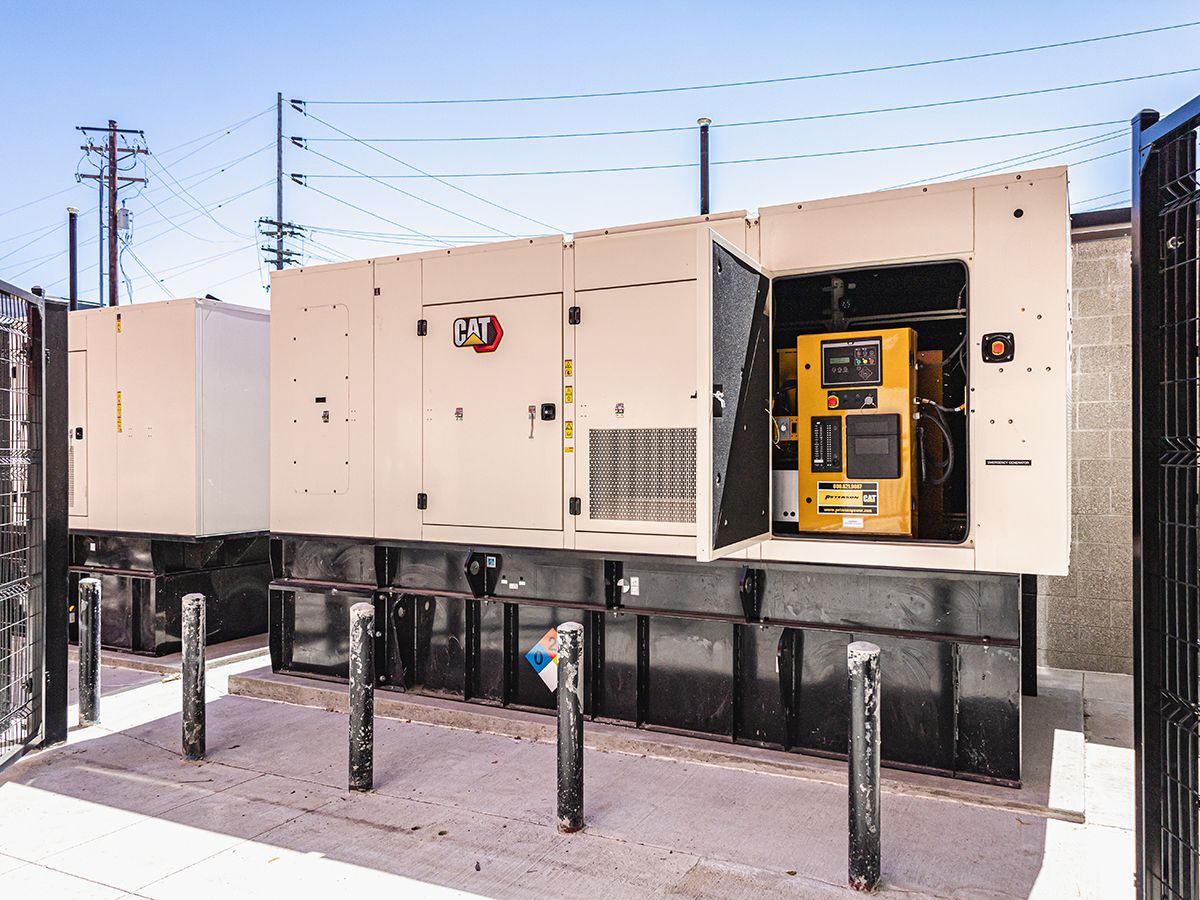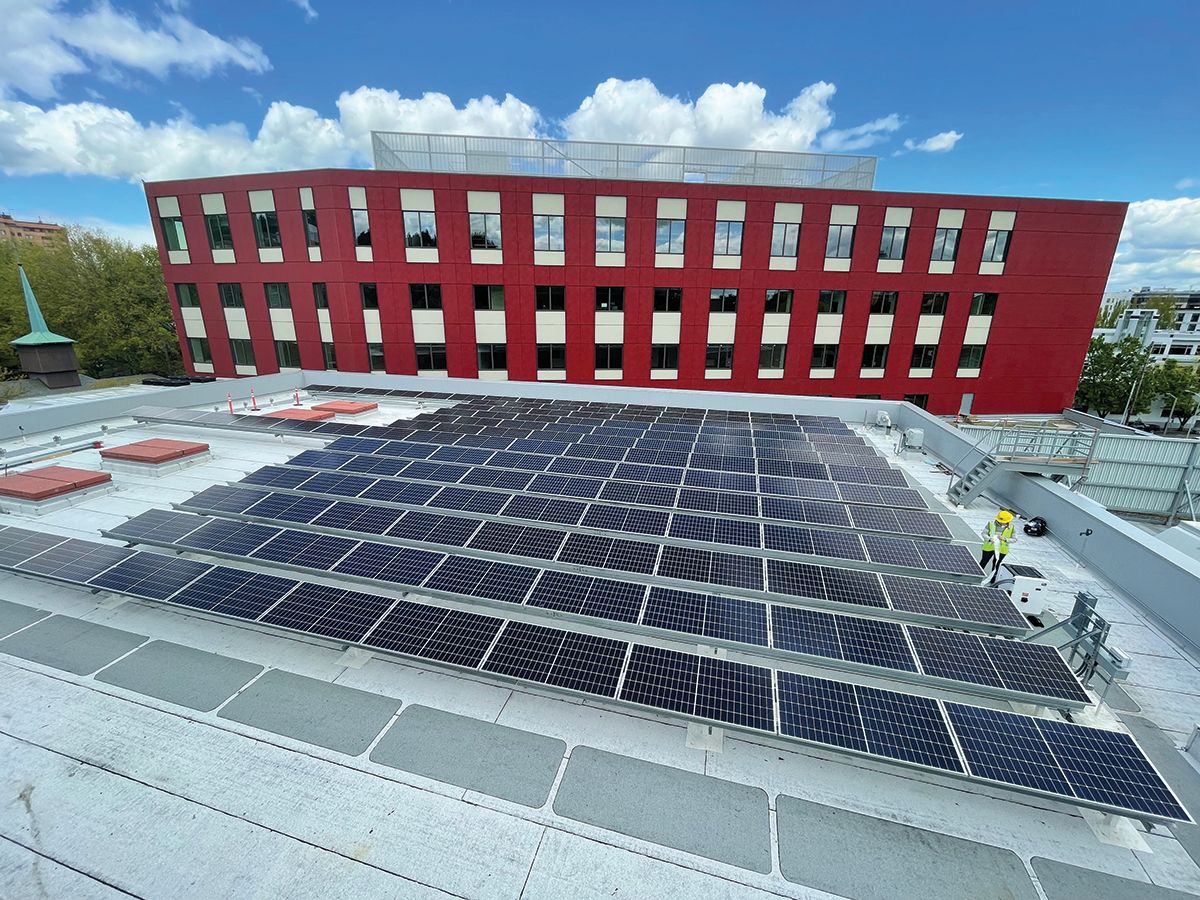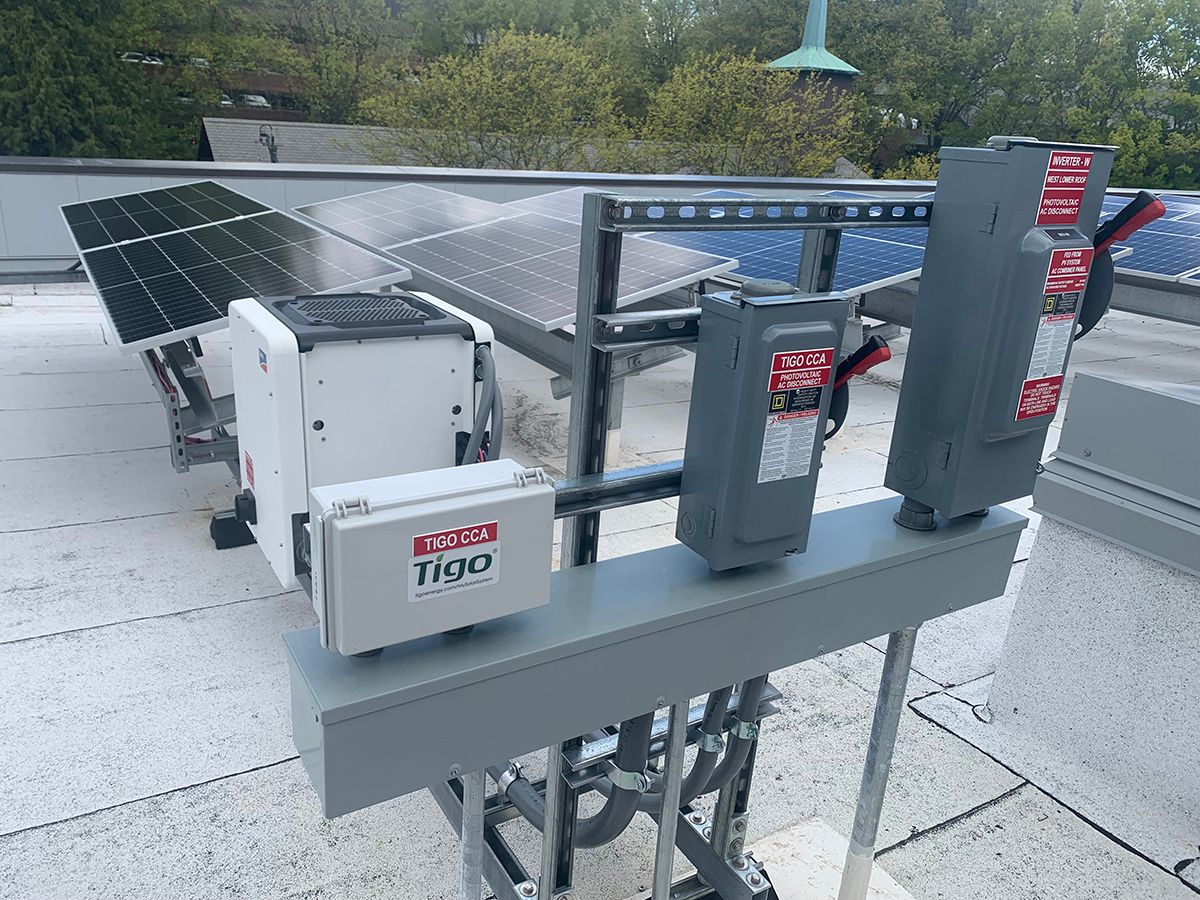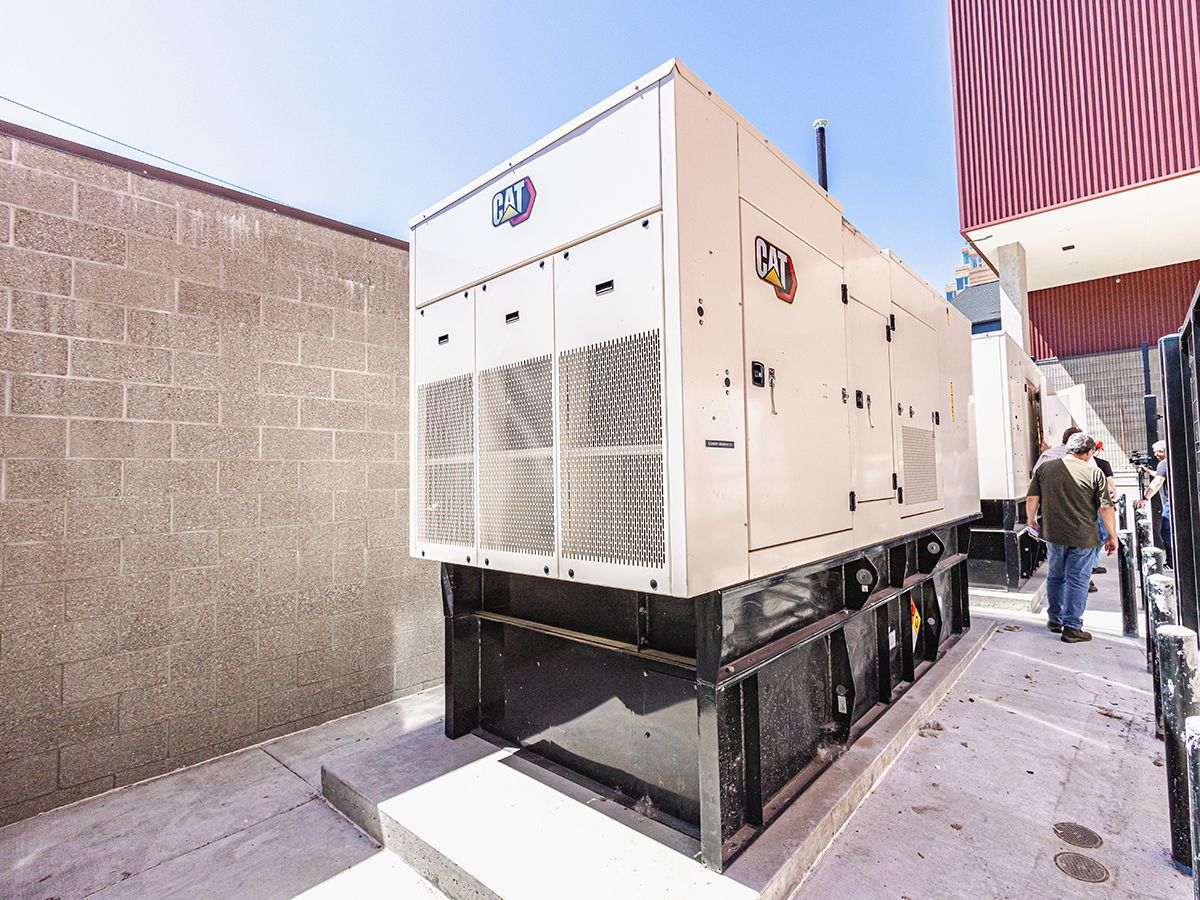POWER NEED
As the oldest high school on the West Coast with origins dating back to 1869, Portland’s Lincoln High School was overcrowded to the point where some classes were actually held outside. With space at a premium in the 1952-era building, boys’ basketball practices for 9th graders were held at 6 a.m., while dance team practices took place at 10 a.m.
A lengthy planning process ensued for building a new school. After years in the making, bonding for the project was approved in 2017. Last fall, a new six-story, 289,000-square-foot school opened to glowing reviews. The new $242 million facility is 120,000 square feet larger than the old building, with a modern design that has open space for congregating and state-of the-art classrooms that enhance learning.
The net result is a sophisticated urban campus that presents a creative model of restraint and economy of space while also maximizing design and functionality.
“The whole project exceeds my expectations,” said Principal Peyton Chapman prior to the school’s opening in September 2022. “I just have so much excitement and pride.”
The State of Oregon requires all buildings that utilize public funds to dedicate 1.5% of the construction budget to alternative energy. The new Lincoln High campus includes a host of green features that reduce the school’s impact on the environment. The project is LEED Gold certified and includes a green roof to reduce solar heat gain and a photovoltaic (PV) solar array that generates almost 300 kW of power. The building makes extensive use of natural lighting and utilizes radiant floor heating in the main commons for high efficiency heating.
Building systems automatically dim the lighting based on the amount of daylight that comes into the building, resulting in substantial energy savings, says Erik Gerding, senior project manager for the Office of School Modernization for Portland Public Schools (PPS).
“We’ve always been focused on trying to implement sustainable energy and recycling,” Gerding says. “It’s just part of the DNA in this region where we live. We were doing this long before the school district adopted a formal climate policy last year.”
The PPS Energy & Sustainability Office works to combat climate change by reducing greenhouse gas emissions in its schools and promoting resilient, inclusive, sustainable buildings and schoolyards. PPS has demonstrated a commitment to designing and constructing green buildings that are sustainable, resilient, healthy, and efficient. So far, nine of its buildings have achieved or qualify for LEED (Leadership in Energy and Environmental Design) certification from the U.S. Green Building Council.
Last year, PPS adopted a broad climate policy that aims to mobilize resources for climate action, while educating and empowering students as leaders in the transition to a sustainable city and restorative society. A primary goal is to reduce environmental impacts and costs by designing and constructing new and renovated low-carbon schools that are energy-efficient, resilient, and adaptable. That includes utilizing renewable, non-fossil fuel energy sources such as solar, wind, and hydroelectricity.
“It’s a very overarching effort that calls upon every department in the school district to act swiftly on climate mitigation,” says Aaron Presberg, a PPS senior program manager for Energy & Sustainability. “In my department, our primary focus is reducing emissions because we work in buildings and operations.”
As part of its climate policy, PPS plans to reduce its greenhouse gas emissions by 50% by 2030—using the 2018-2019 school year as a baseline—and achieve net zero emissions by 2040.
SOLUTION
In designing this new world-class facility, engineers on the Lincoln High School project sought to incorporate sustainability and energy resiliency, ultimately contacting Cat® dealer Peterson Power Systems to devise a state-of-the-art solution. This consultation was based on Peterson’s experience with photovoltaic systems and standby power generation applications, said Lauren Krueger, a senior electrical engineer with Interface Engineering.
“The people at Peterson Cat are just so reliable and easy to work with, and Caterpillar has a leading presence in microgrid applications,” Krueger said. “So, I think we were pretty set on going with Cat components and Peterson Power Systems for their help and expertise in designing this project.
“Scott Posey (sales rep) and Eric Dappen (project manager) were both very helpful throughout the design process as we determined what we needed to specify, such as identifying the PV inverters that are compatible with the Cat microgrid controller,” Krueger said. “They helped us develop the whole design. They also assisted in conversations with the City of Portland to explain what we were planning and answering any questions, since it was a unique scenario that the city hadn’t seen before.”
The final product is a Cat microgrid that includes a 278 kW solar array and two Cat diesel generator sets (C9 and C13) that are all connected to a Microgrid Master Controller (MMC). The solar panels are net metered and send power back to the utility grid, for which PPS receives a credit on the school’s energy bill.
The Cat MMC is the brains of the system, integrating both traditional and renewable energy sources to provide overall monitoring and control of the assets, thereby optimizing performance.
RESULTS
In the event of a grid outage, the two Cat generator sets serve as a source of standby power to run the school’s critical loads. The C9 generator set handles emergency loads and operates in parallel with the solar (PV) system. The EMCP 4.4 controller on the C9 connects to the MMC and the PV system. Meanwhile, the C13 provides standby power for life safety loads, but by code cannot be connected with a PV system.
“Before the rebuild at Lincoln, we opened several other schools in the district that have passive solar PV systems,” Gerding says. “But with each project the technology evolved. So, when we got to Lincoln, we started asking some different questions about the system and how it could be designed to incorporate renewable energy, while also providing standby power.
“If the generator has a 72-hour run time based on its fuel capacity, we can extend that run time by utilizing the PV energy to take up some of that standby power load,” Gerding says. “It’s designed to run that way when the grid is down.”
Loads backed up by the standby generator and PV load sharing include:
- Smoke control system
- Security and door actuators
- Domestic water booster pumps
- Elevators
- Freezers and coolers (including for medicine)
- Site lighting
- Motorized shades
- Motorized gates
- Building automation system
- ADA doors
- Wheelchair lifts
For added reliability, the microgrid is outfitted with Cat Connect, which provides the ability to remotely monitor the status of the system. Cat Remote Asset Monitoring (RAM) provides real-time alerts, including engine and electrical parameters, fuel level, and current faults. If there is an issue, notifications are sent via text message and email.
“Our goal is to go beyond reducing emissions, by also making more resilient buildings to withstand climate events such as floods, wildfires, and extreme heat events,” Presberg says. “If there’s a grid outage, we have a backup system powered by the generators and solar panels that can operate critical parts of the building when there’s no grid power.”
Download the Power Profile




















